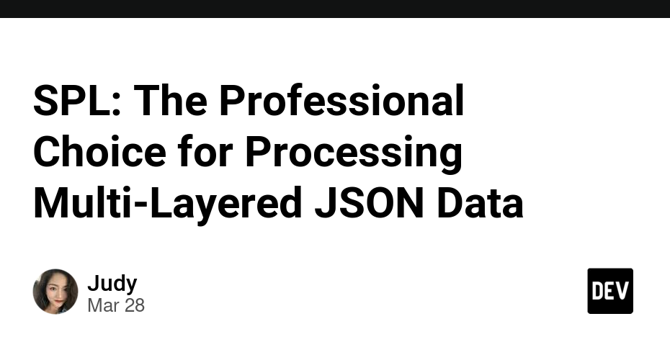Dev
4w
17

Image Credit: Dev
SPL: The Professional Choice for Processing Multi-Layered JSON Data
- JSON’s nestable structure is ideal for representing hierarchical data relationships, such as orders containing customers and products with various details.
- SQL lacks support for complex nested structures, while new databases like DuckDB offer partial support for processing JSON data.
- DuckDB handles single-row nested fields efficiently but struggles with multi-row nested fields in calculations.
- DuckDB can expand multi-row nested fields for calculations, which can be less efficient compared to using a physical flat table.
- DuckDB can perform calculations on multi-row nested fields using lambda syntax, but this approach can be cumbersome.
- esProc SPL fully implements multi-layer nested table mechanisms, providing concise and consistent code for data processing.
- Python supports multi-layer nested structures but requires more complex coding compared to SPL, particularly for multi-row nested fields.
- SPL offers concise and consistent syntax for handling nested data structures, making it a professional choice for such data processing tasks.
- Python's syntax inconsistencies and verbosity in handling nested data make it less effective for complex calculations compared to SPL.
- SPL simplifies the process of filtering and calculating data within multi-layer nested structures, offering clear and concise code.
Read Full Article
1 Like
For uninterrupted reading, download the app